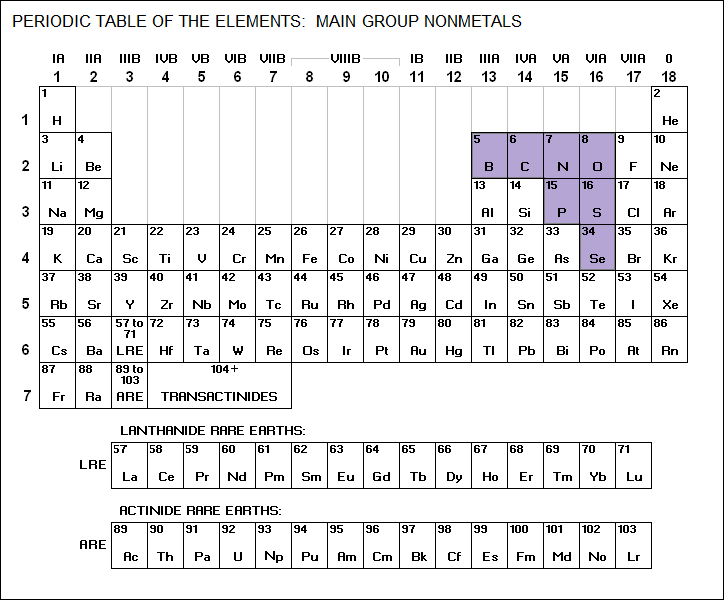
* Sulfur is a member of the main group nonmetals family:

______________________________________________________________________
SULFUR / S / 16
Sulfur, once known as "brimstone", is a chemically complex element,
since it can exhibit a range of oxidation states that makes its
bonding patterns somewhat unpredictable. A consequence of this is
that elemental sulfur exists in a number of allotropic forms, the
most common being a ring of eight sulfur atoms that form a yellow
crystal. It can also form rings of other sizes: 4 through 12
atoms, 18 atoms, or 20 atoms. If sulfur is heated and then cooled,
the rings will open up and then the atoms will rejoin into long
polymers, forming a rubbery "plastic sulfur".
Sulfur is stable in air and water, burns if heated, and is
dissolved by oxidizing acids. Four isotopes are found in nature:
S<32/16> / 95%
S<34/16> / 4.2%
S<33/16> / 0.8%
S<36/16> / 0.02%
All are stable.
atomic weight: 32.066
abundance: 17th
density: 2.2 gm/cc
melting point: 113 C
boiling point: 444 C
valence: 2 4 <6>
____________________________________________________________________
The "S--" ion is referred to as "sulfide", while the "SO3--" group is known as "sulfite" and the "SO4--" group is known as "sulfate".
Sulfur is another widely-used element, primarily as a chemical industry feedstock in the form of sulfur dioxide gas (SO2) or sulfuric acid (H2SO4). In fact, sulfuric acid is the world's most important industrial chemical. Sulfur is mostly obtained from hydrogen sulfide gas (H2S), a component of raw natural gas. There are also more or less pure underground deposits of sulfur, with the element obtained by the "Frasch process", which involves sinking a concentric triple-pipe assembly into the deposit. Hot water is pumped into the deposit through the outer pipe, turning the sulfur into a yellow plastic material. Hot compressed air is forced down the middle pipe, forming a frothy fluid mass that comes back up the center pipe.
Sulfur is a component of black powder, and it was once used as a fumigant. Sulfur compounds tend to stink; H2S has a notorious "rotten egg" smell. The carbon-sulfur compounds known as "mercaptans" are worse; they make up the vital component of halitosis, and skunks use a mixture of mercaptans as a defense. Mercaptans retain their nasty stink in very small concentrations. Mercaptans are used in the synthesis of herbicides.
